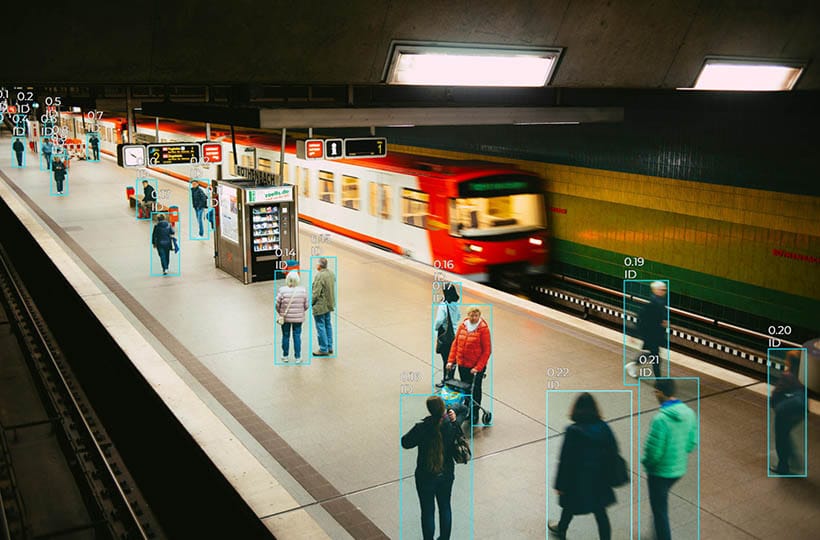Semi-automated labeling: combining human judgment with machine speed

Data annotation is a key component for developing machine learning models. Semi-automated labeling combines human control with the speed of automated algorithms. This approach simplifies the data annotation process, reducing the laboriousness of manual labeling.
Data labeling automation uses consistent and accurate data labeling based on predefined rules and algorithms. This allows for rapid processing and labeling of large data volumes, reducing labor costs.
Automated data labeling is not suitable for tasks that require nuanced human judgment. A balanced approach that combines automated systems with human control is needed.
Quick Take
- Semi-automated labeling combines human verification with the speed of an AI machine.
- Automation ensures data labeling accuracy and reduces human error.
- Human supervision is required for complex tasks.
- The hybrid approach provides scalability and adaptability to specific project needs.

Understanding Semi-Automatic Labeling
Semi-automatic labeling is data annotation that combines automatic data labeling using AI models with manual human correction.
Active learning algorithms identify and prioritize samples to drive AI model performance. Iterative refinement of the AI model with feedback from the annotator ensures accuracy and reduces prediction uncertainty.
The quality of annotation is critical to developing and fine-tuning machine learning algorithms.
Benefits of semi-automatic labeling
Automated systems accelerate data labeling. They use robust machine learning models to quickly process large data sets, reducing analysis time and minimizing errors.
Semi-automatic labeling combines human verification with rapid machine AI data annotation. Human participation corrects inaccuracies in the automated system and increases the reliability of data processing.
Implementing semi-automatic labeling systems reduces the cost of data labeling. They also reduce the need for human labor to perform repetitive tasks. Semi-automatic systems require less initial investment, making them affordable for businesses.
Poor-quality data sets lead to rework, delays, and inefficiencies. Semi-automatic labeling lets you get quality data labels from the start, saving time and money.
Key technologies involved
Semi-automatic labeling relies on machine learning, NLP, and computer vision. Advanced annotation tools streamline data processing and ensure accuracy.
Applications in Various Industries
Let's consider the areas of application of semi-automatic labeling.
Challenges of implementing semi-automated labeling
Creating high-quality annotated data is a challenging task. Both manual and automated data annotation processes are prone to errors.
Using automated tools, Keymakr annotates data quickly. An experienced team of annotators will correct any detrimental inaccuracies.
Finding a balance between human judgment and the speed of machine AI. Automation can speed up labeling, but over-reliance on automation reduces its benefits. "Human in the loop" strategies are a solution to this problem. Machines perform repetitive tasks, while humans focus on complex, nuanced tasks.
Effective labeling techniques
- Comprehensive training for data annotators with detailed instructions and clear standards. Annotators must understand the nuances of the data they label to produce quality results.
- Regular monitoring and feedback maintain high standards of data labeling. Constant checks help quickly identify and correct errors, balancing labeled and unlabeled data.
- Quality control of data labeling ensures reliability and consistency. Automated systems include quality checks to correct errors. For example, Continental, a tire manufacturer, has seen increased efficiency and fewer errors with automated tire labeling machines.
These practices ensure the reliability and accuracy of any semi-automated labeling system.

The Role of Human Judgment
Annotators are indispensable in complex or subjective data labeling scenarios. Algorithms process large data sets quickly but have trouble with nuanced interpretations. Human judgment reconciles the labeled data with the expected results of the AI model.
Dealing with data ambiguity is a challenge in machine learning. Automated systems are inadequate at distinguishing nuances, which leads to inaccuracies. Human oversight is essential here, correcting ambiguities by interpreting context that AI machines may not understand. This increases the reliability of machine learning models.
Different perspectives in data annotations reduce biases that arise at various stages of machine learning, creating reliable and ethical AI programs.
Future Trends in Semi-Automated Labeling
The demand for automation is driving technological advancements in data labeling. Innovations such as smart labeling and IoT integration are expanding the capabilities of automated annotation.
A significant trend is the development of active learning, where AI models select the most challenging samples to obtain the most valuable feedback from the annotator. Also important is developing self-learning AI models that adapt to new data types without human intervention.
Improving the interfaces of annotation platforms to be more interactive and user-friendly will simplify the process of checking and correcting data labels.
FAQ
What is semi-automated labeling?
Semi-automated labeling is data annotation in which artificial intelligence pre-labels samples and humans review and correct them.
Why is semi-automated labeling important for data processing?
Automation speeds up data labeling by processing large data sets faster than manual methods.
What role does human supervision play in improving the accuracy and reliability of data labeling?
Human supervision detects and corrects errors that automated systems might miss. This increases the reliability of data.
What technologies are key to semi-automated labeling?
Machine learning, natural language processing, and computer vision.
In which industries is semi-automated labeling used?
Used in healthcare, e-commerce, and autonomous vehicles.
What challenges are faced when implementing semi-automated labeling?
Challenges include ensuring data quality and balancing human and machine roles.
What are the best practices for effective semi-automated labeling?
Annotator training, monitoring results, and quality control.
How does human judgment play a role in semi-automated labeling?
Human judgment is important in complex scenarios. Annotators make decisions about ambiguous situations that automated systems may miss.
What future trends are expected in semi-automated labeling?
Algorithm improvements will make systems more accurate and faster. The role of data scientists will evolve, focusing on supervision and model improvement.

